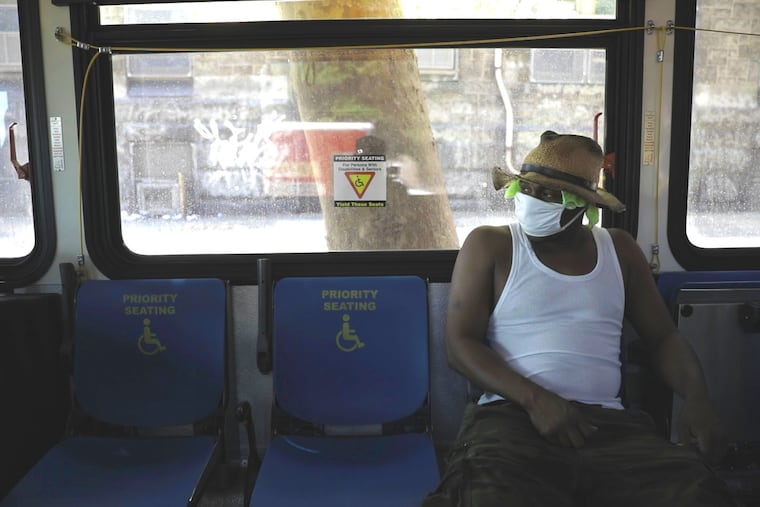Philly heat-wave death toll rises to 5, and it might increase
Two deaths were reported Saturday, two on Monday, when the city set a record for the highest minimum temperature for a July 25, and one on Tuesday.

The season’s most persistent and intense heat wave, which blessedly ended on Tuesday after setting two records, now has claimed at least five lives in Philadelphia, the Public Health Department said.
The city offered no details on any of the heat-related deaths, citing confidentiality issues. Two occurred on Saturday, two on Monday, and one Tuesday, according to the department.
Health department spokesperson Jim Garrow said it is possible that the heat-related death toll could increase in the coming days as more victims are identified.
In addition to the run of daytime temperatures consistently in the mid- and upper 90s during an eight-day siege that began July 18, including a record of 99 degrees on Sunday, health officials had been concerned about the sequence of very warm overnights. They are especially dangerous to elderly people who live alone in rowhouses without air-conditioning.
The official temperature in Philadelphia has not slipped below 70 degrees since July 11. The lack of overnight cooling allows for a quick run-up in indoor daytime temperatures. Monday’s low, 81, broke the record for the highest minimum temperature for a July 25.
“We think of people dying of the heat outdoors,” said Scott Sheridan, a Kent State University professor who is a heat-health specialist. “For most people it’s indoor weather that matters.”
Fortunately, even though summers have become warmer in Philadelphia — the daily “normal” temperatures in July are 3 degrees higher than they were in 1970, according to the National Weather Service — and in cities around the country as global temperatures have increased, heat-wave deaths have declined.
» READ MORE: These charts show why Philly summers are hotter than in the 1970s
In Philadelphia, in the last 10 years 37 heat-related deaths have been reported in the city, compared with as many as 400 in the 10-year period ending in 2002. That might be related to the fact that the city has avoided the prolonged heat waves that characterized the 1990s. In 1995, temperatures reached 90 or higher on 17 consecutive days.
Sheridan said wider use of air-conditioning might be a factor, “and much better awareness. There’s so much more attention to these events now than there had been, and the forecasting is a lot better, that the potential impacts are better known.”
» READ MORE: Summer temperatures are higher, but heat wave deaths, lower
That awareness evidently has a lot to do with Philly. In 1995, Philadelphia established its low-tech, low-cost Hot Weather–Health Watch/Warning System that included activating a heat hotline and encouraging residents to look in on neighbors.
The CDC and NOAA have held up the city as a national model for responding to heat.
Fortunately, no heat emergencies loom. The region turned into a massive cooling center Tuesday, when Philly’s high was a mere 83 degrees. Save for Thursday, when highs are forecast to reach the low 90s, they are expected to get no higher than the upper 80s through the weekend.
On Sunday morning temperatures might even slip below 70.
Staff writer Max Marin contributed to this article.